6 Stargazing Secrets, According to Astronomy Experts
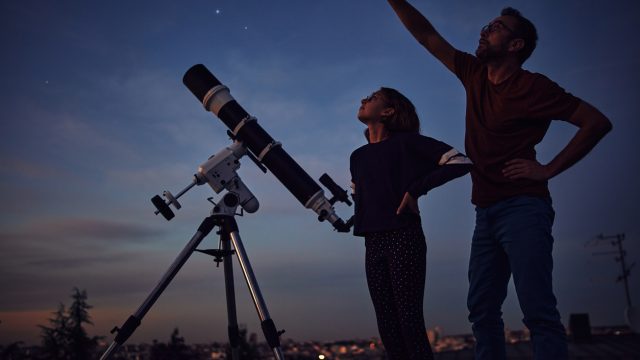
Even though it’s something we see daily, it can be easy to forget that looking into the night sky is really our planet’s view of the far reaches of our galaxy. Whether it’s watching a meteor shower, spotting a passing comet, or just taking advantage of a warm summer night with good conditions, all stargazers really need on hand to enjoy the show is a little bit of time to take it all in. But whether you’re an expert or a beginner, there are a few tips that can help you get the most out of the experience. Read on for stargazing secrets, according to astronomy experts.
READ THIS NEXT: The 10 Best Destinations for Stargazing in the U.S.
1
Binoculars can be a very handy tool.
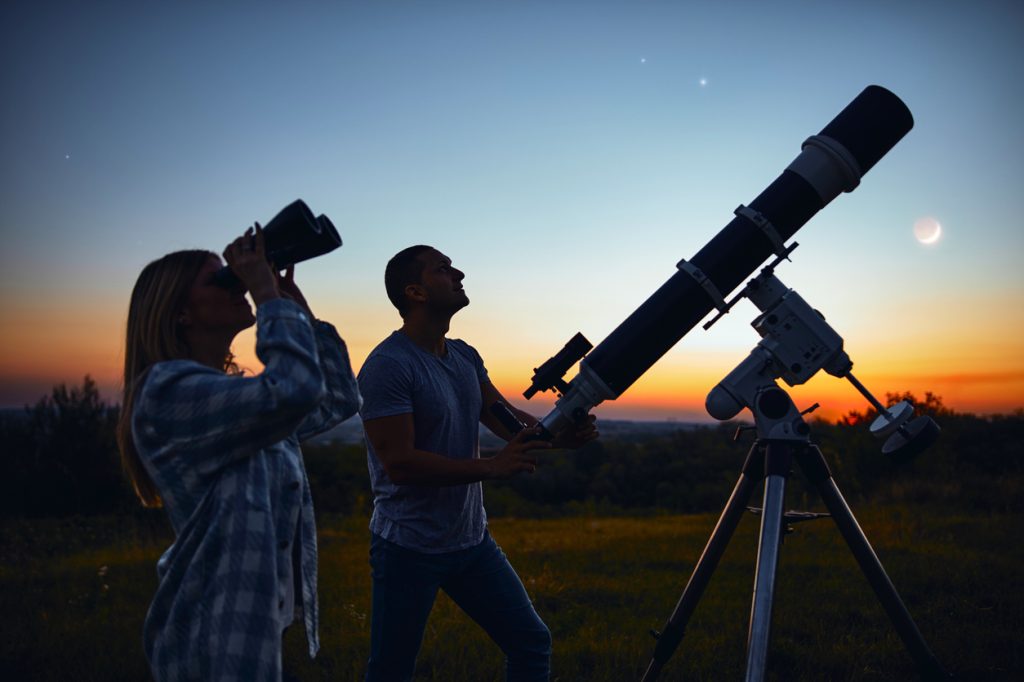
Under the right conditions, looking up at the night sky can be a breathtaking experience all on its own. But if you want to get a closer look, experts point out that you can improve your sights without investing in a telescope.
“Use binoculars to enhance your viewing experience and see more detail in the night sky,” Chris Klein, amateur astronomy advisor and founder of AstroRover, tells Best Life. “This will allow you to observe celestial objects in greater detail and appreciate their beauty,” adding that binoculars are much more portable and easier to travel with.
2
Try to steer clear of light pollution.
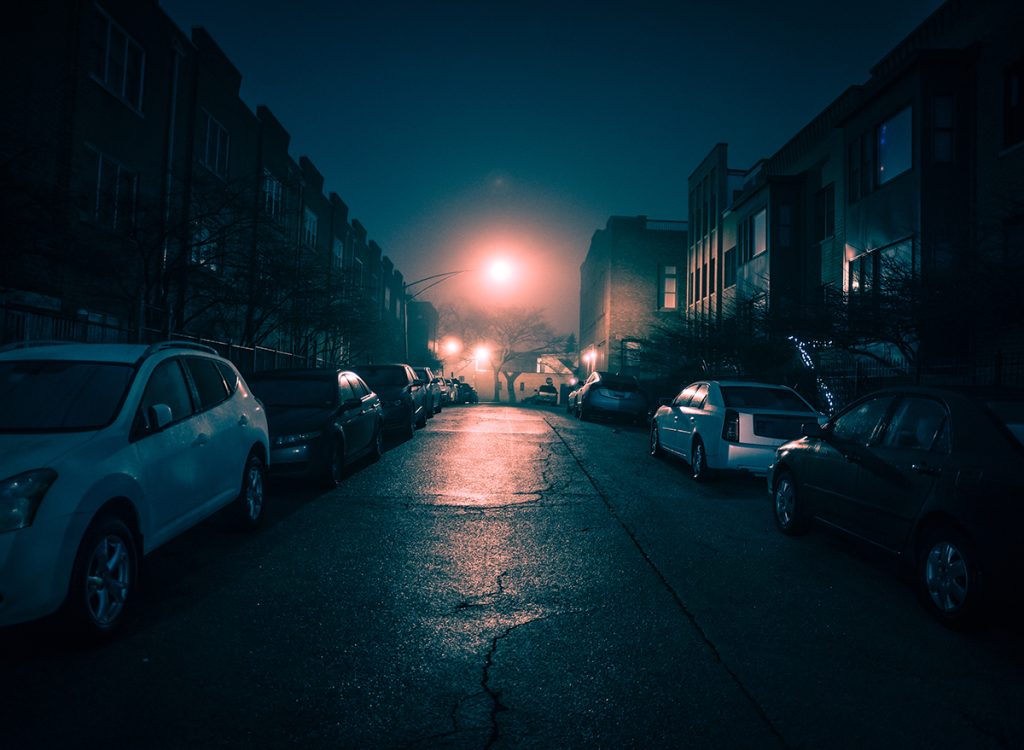
The night sky starts to come alive as soon as the sun’s light begins to sink below the horizon. But just as daylight makes it hard to see stars, streetlights and other sources of brightness can really mute what you see above.
“Bright lights wash away the stars,” says Klein. He suggests avoiding light pollution by heading away from population centers and finding dark sky locations further from city lights.
“This will allow you to see more stars and celestial objects in the night sky, creating a better stargazing experience,” he says.
READ THIS NEXT: The Next Total Solar Eclipse Will Be the Last Until 2044, NASA Says.
3
Allow your eyes plenty of time to adjust.
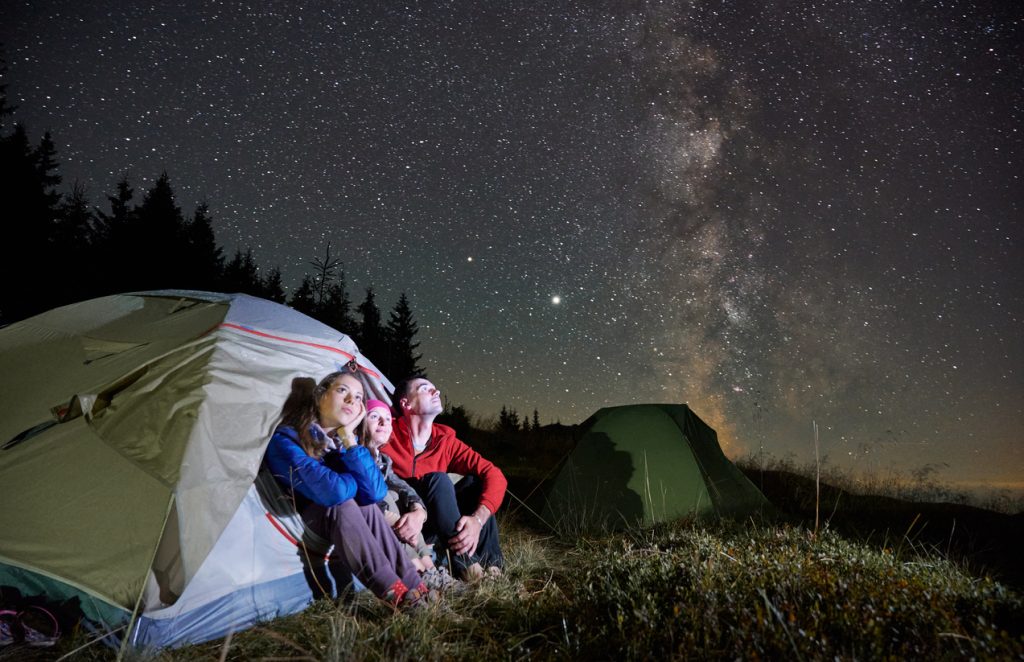
Our eyes are built to optimize our vision depending on the conditions we’re working with. Of course, anyone who has stumbled around trying to find their way in the dark after exiting a bright room knows how disorienting it can be until your eyes acclimate. Experts note that the same rule applies to stargazing.
“Allow your eyes to adjust to the darkness for at least 20 minutes before observing to see more stars,” suggests Klein. “This will help your eyes adapt to the low light conditions and allow you to see more celestial objects in the night sky.”
This also includes avoiding the brightness of looking at your phone screen, he adds.
4
You should dress for (stargazing) success.
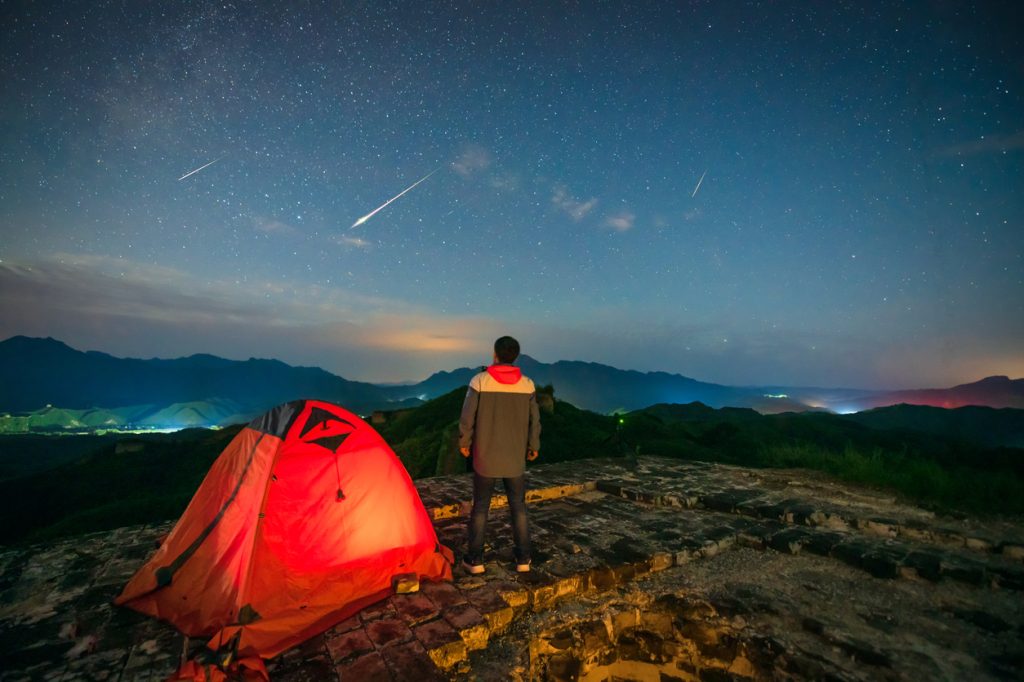
One of the most appealing parts about stargazing for amateur astronomers is that it’s an outdoor activity. Unfortunately, this can also become a problem if you’re prone to getting cold.
“It gets chilly at night, even in summer,” Klein cautions. He recommends staying comfortable during extended stargazing sessions by wearing warm layers and bringing a blanket or chair that lets you lie back and look up easily.
“This will allow you to focus on the night sky and avoid distractions caused by discomfort,” he adds.
For more life advice delivered straight to your inbox, sign up for our daily newsletter.
5
Keep the moon in mind when scheduling your outings.
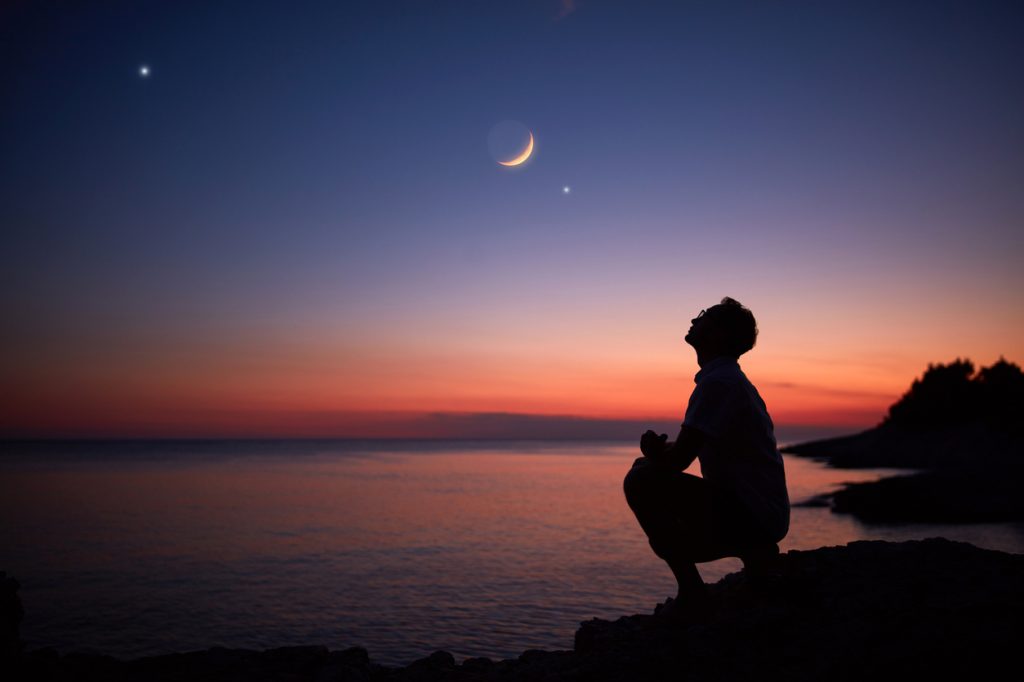
The moon can be quite the spectacle in the night sky in and of itself—especially in the case of a lunar eclipse. But while it can be fun to gaze upon our closest celestial neighbor, it can also create lousy conditions for taking in the stars.
“Plan your stargazing trips around the new moon or crescent moon phases when the sky is darkest,” Klein says. “This will allow you to see more stars and celestial objects in the night sky, as the moon’s brightness can make it challenging to observe faint objects.”
6
Consult some star charts before you head out.
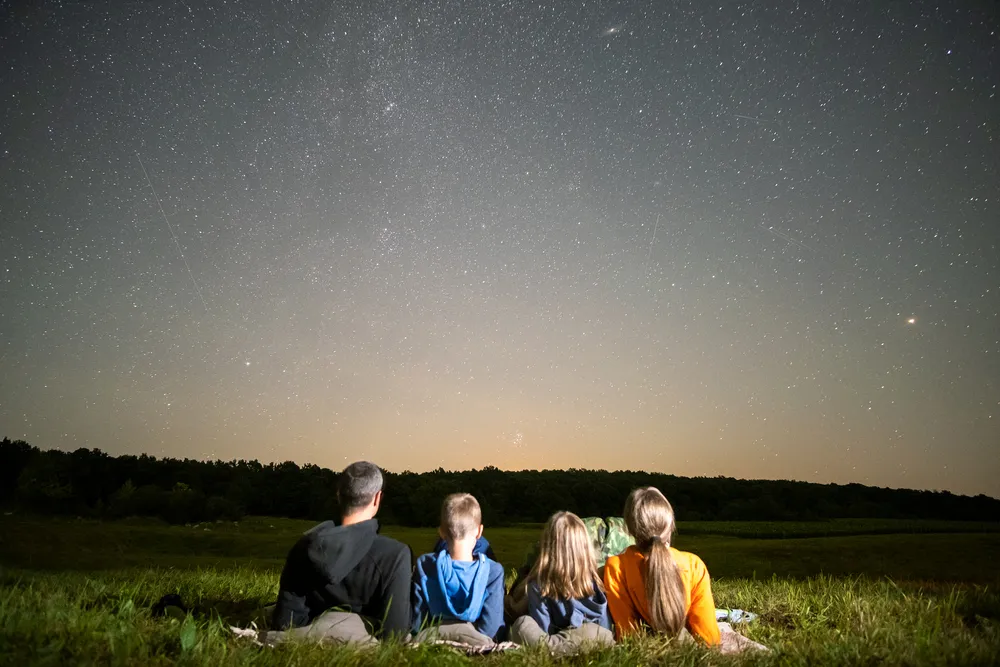
The night sky is so vast that it can feel overwhelming trying to locate any points of interest. But just like any other hobby, doing a little research in advance about what the sky will look like in your area can be a great way to get started.
“A little preparation will go a long way,” says Klein. He suggests using star charts or apps to identify and locate constellations, stars, and other celestial objects in the night sky, especially if you’re visiting a new corner of the globe or stargazing at a different time of year.
Once you’ve located some significant points of interest, it will help you navigate the night sky on your own and find the objects you want to observe.